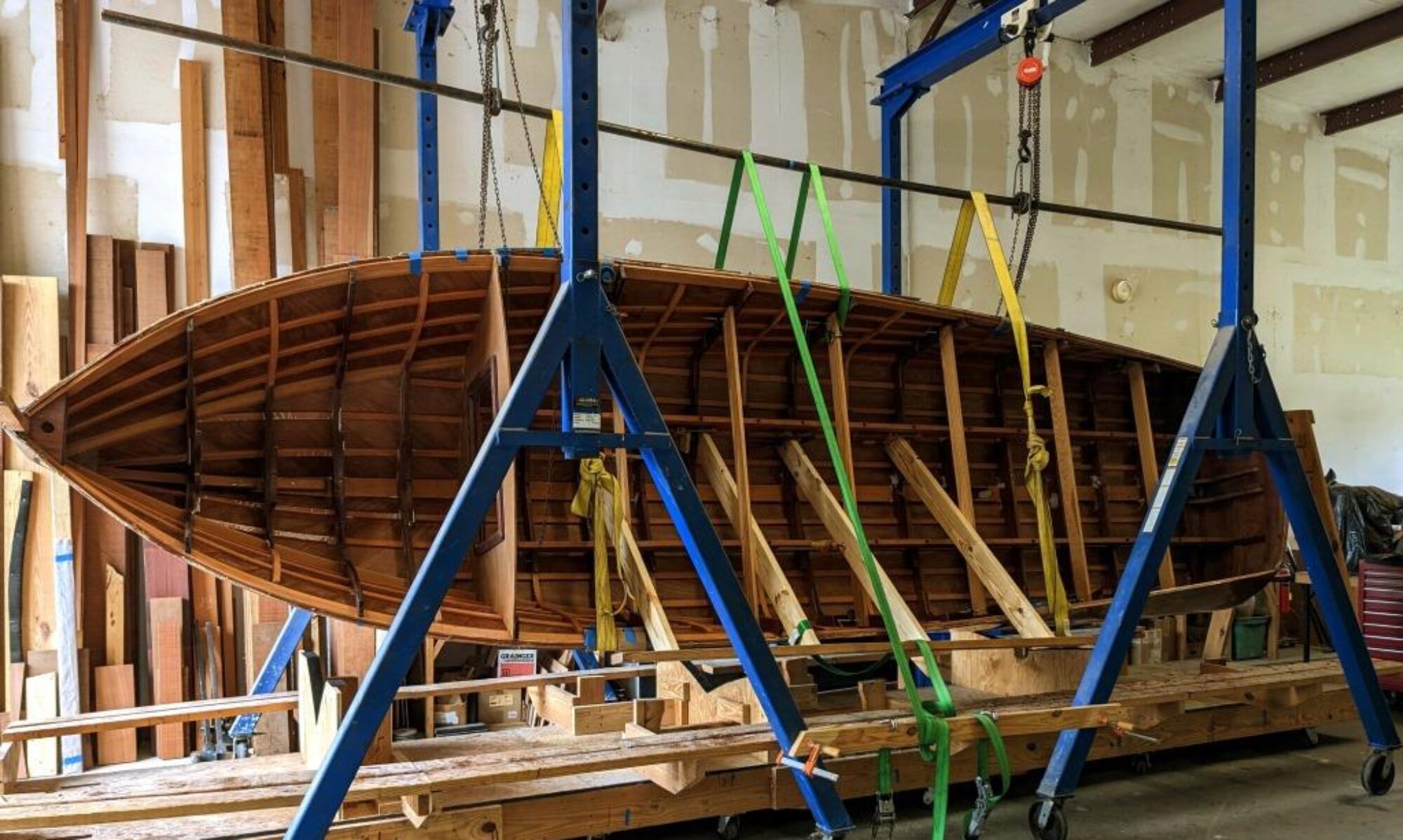
A lot of preparation is required for steam bending wood. You need a fair amount of specialized equipment. I covered that a couple of weeks ago here in Getting Ready for Steam Bending Wood. Now it’s time to put that equipment into action.
The first piece I bent was the lower transom bow. I chose it because it was short, and I figured it would be easy to handle without the help of another person. You have to get the piece out of the steamer and onto the form quickly, before it cools. So if it’s long or cumbersome, it helps to have more than one person.

This boat has a curved transom with an 8 ft. radius to the curve. There aren’t enough pieces in the actual transom framing to support a smooth, even clamping surface, so I had to build a form. For everything else, we can use the boat framework as our form (i.e. keel, chines, planks).

Here’s the lower transom bow clamped to the form. I tried 3 times to bend a piece I could use. But alas, because the oak was about 1-1/2 inches thick, and because the bend was so severe, I got too much springback. The bent piece could be clamped to the boat framing, and forced to the proper shape, but this isn’t really what you want. Particularly with the transom, you want the bow to describe the curve and hold that curve. Forcing a piece to a tighter curve here runs the risk of having the bow stress some of the joints and pull them apart. I guess that’s why the original transom bow was sawed on a curve.
I didn’t like the idea of sawing this piece on a curve. It gives you too much short grain at the ends of the curve, which can split. Of course, it worked for 60 years. We have the original transom bow to prove it. But there’s a better way. I finally chose to laminate oak strips to the correct curve, using the form I’ve already built. I’ll post some pictures of the laminated transom bow later.

For now, it was time to move ahead and bend in the keel and chines. I was able to use the framework of the boat for my form for these pieces. They’re much longer (they run the whole length of the boat), and you need two people to get them out of the steamer and onto the boat quickly. So I enlisted the help of some good friends. This picture is of the crew that helped with the starboard chine.
 Finally, after the chine was bent onto the boat frame, it was wrapped in wet towels to let it cool and dry slowly–over several days. Here’s a picture of it without all the people in the way. Not much to see really. But it’s there under the rags.
Finally, after the chine was bent onto the boat frame, it was wrapped in wet towels to let it cool and dry slowly–over several days. Here’s a picture of it without all the people in the way. Not much to see really. But it’s there under the rags.











